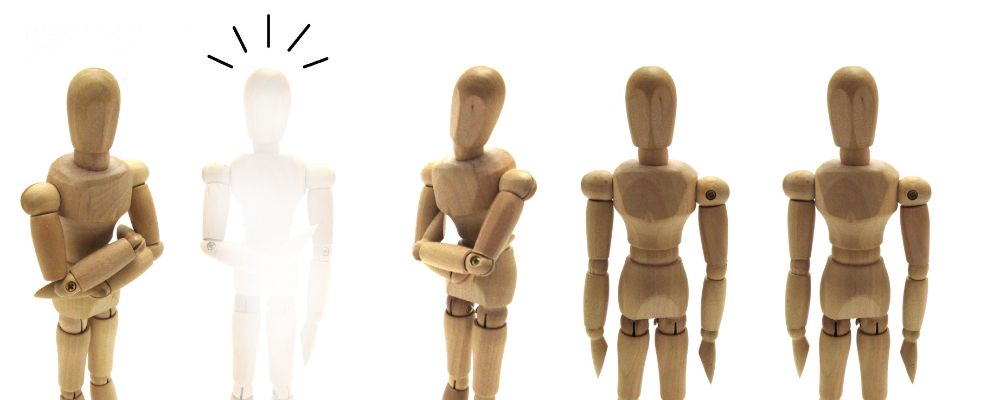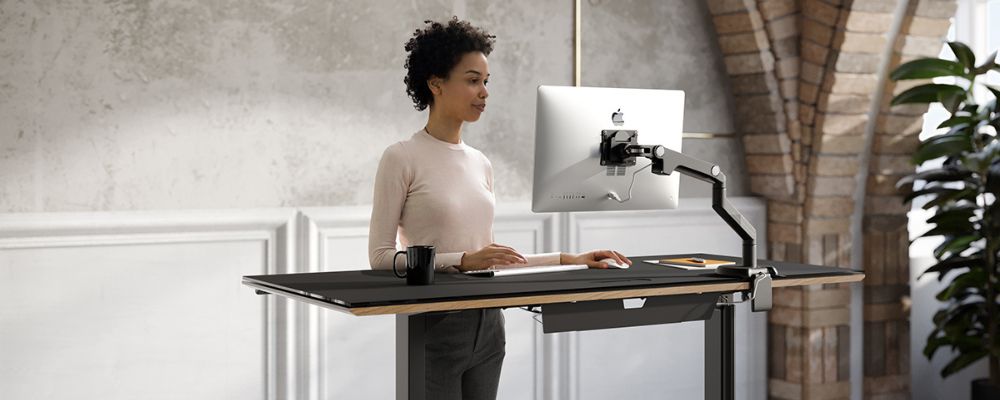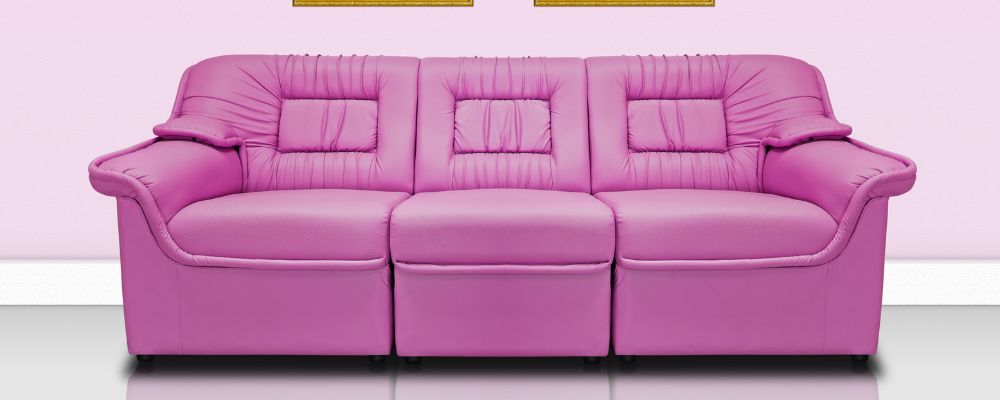Imagine walking into your office on a Monday morning, the promise of a productive week ahead filling the air. But as you settle into your desk, an all-too-familiar discomfort creeps in – the ache in your back, the strain in your neck, and the nagging thought that maybe, just maybe, your workspace isn’t as conducive to your well-being as it should be.
We’ve all been there, haven’t we? That’s where the magic of ergonomics steps in, transforming not just your workspace but your entire work experience. So, grab your favorite cup of coffee and join me on a journey to discover the compelling importance of ergonomics in corporate interior designer. Your health, productivity, and that elusive Monday motivation all depend on it!
What is Ergonomics?
Ergonomics is the concept of designing or constructing workplaces, products and systems to suit the people who use them. In other words, ergonomics is the design and construction of objects in a way that is comfortable to use and ensures maximum performance.
You see them mostly in workplace design, but there’s no reason you shouldn’t consider them when decorating your home.

Think of a pen. You can see that most of the handles are of a certain length. Now think back to your childhood memories. Remember those weird pens that kids used to bend at school?
Something as long as a 12-inch ruler? Do you remember how uncomfortable they were? Ergonomics focuses on these variables to ensure that the object being used has a design that suits the user. That is why it is sometimes called the human factor. Ergonomics is an important part of research in the product development process. Its purpose is to increase the safety, comfort and performance of a product or an environment, such as an office. Ergonomics uses anthropometrical data to determine the optimum size, shape and form of a product, and make it easier for people to use.
Ergonomics can help you identify which user characteristics you should consider during your design process. This is important when you consider how much individuals vary in terms of:
- Body size
- Body shape
- Strength
- Mobility
- Sensory sensitivity
- Mental ability
- Experience
- Training
- Culture
- Emotions
When you apply ergonomic methods early in the design process, they can often identify opportunities for innovation.
Why is Ergonomics Important?
Operators can quickly become frustrated and tired when performing tasks without proper ergonomics. Laybacks can relieve unnecessary stress that workers may face at work, but they also compromise quality and safety when the job is not performed properly.
The ergonomic design allows the operator to perform quality work, allowing stress-free work. The tools they need are designed with them in mind so they can work more efficiently while staying safe. Read further to know the importance of ergonomics in corporate interior design.
Ergonomics Prevent Injuries and Reduce Costs

Nearly all workers have experienced some form of back pain or eye strain during their day-to-day work. Injuries like these can be caused by poor lifting technique, poor posture at a non-ergonomic workstation, or strong lighting. They are often overlooked or simply accepted as part of the job. However, repetition of these pain-inducing activities can lead to more serious injuries, including chronic neck and shoulder pain, muscle strains or tears, and even loss of vision.
Ergonomic workspace design considers natural human movements to prevent work-related injuries and illnesses.
Ergonomics ensures the operator has a full range of motion to complete the job. Ergonomics not only protects employees from accidents on the job but also saves companies from spending millions of dollars on workers’ compensation.
Increase Integrity, Engagement and Retention
Ergonomic Workspace helps build a culture of wellness. When companies take care of the health and safety of their employees, they can reduce absenteeism and employee turnover.
Employees spend a tremendous amount of time at work, so we think we should be comfortable. And people who feel comfortable at work are more likely to engage and spread positivity both inside and outside the office.
Reduce Absenteeism

Ergonomics can reduce absenteeism by preventing workplace injuries caused by absenteeism and creating a more comfortable work environment for employees. Ergonomics can also reduce employee fatigue and stress, which can be physical or psychological factors contributing to absenteeism. Encourage employees to take regular breaks, change locations frequently, and adapt their workspace to size and shape.
Finally, promote positive health behaviours by providing resources and encouraging employees to adopt healthy eating and lifestyle habits.
Health Benefits
People who work in ergonomic workplaces benefit from improved health. The effects of ergonomics start with the cardiovascular system and extend to other areas. Your heart will be healthier than when working under standard conditions. Ergonomics can improve employee health by reducing overwork and work-related injuries most commonly caused by overwork. The Ergonomic Workstation helps you and your staff put less strain on your body when adjusting the workstation to height.
A neutral position will not allow you to strain your eyes, neck and back. Your legs may also benefit from better blood flow.
Increased Productivity

Ergonomic Workplace is an efficient workplace. From organizing items and supplies to integrating computer equipment and monitors, ergonomic workspaces combine ideas to improve workers’ ability to complete tks.
Optimized workplaces allow workers to focus on their work and are not distracted by discomfort or disorganization. The more focused your employees are, the higher their productivity levels will be.
Have you ever wondered why all the sofas face the TV cabinet?
In the living room, a sofa, centre table and side table are combined as a set. And the set usually faces the TV cabinet. While enjoying a conversation in the living room, it is a human basic to frequently see bright and moving objects (images and bright screens) as long as there is a TV. If you’re forced to turn your head every two minutes to watch TV, no matter how fast you finish your tea, you’ll end up with muscle tension or neck pain before your cup hits the table.
The ergonomics take these factors into account so that the sofa faces the TV.
How about the design of the furniture itself? Does ergonomics come into play?

Of course. The back of the sofa is small but very soft.
And although it looks small, it always covers your back. A chair, on the other hand, has a firmer back that supports the spine. This is to make you feel comfortable while talking on the couch and reading attentively in the chair. More ergonomic chairs have headrests and armrests and are height adjustable. These items are designed specifically for office use.
Conclusion
Incorporating ergonomics into corporate interior design isn’t just a trend; it’s a transformative investment in employee well-being and productivity. As businesses strive for success, remember that a comfortable and supportive workspace isn’t a luxury—it’s the cornerstone of a thriving, motivated workforce.
If you’re looking to create an ergonomic and professionally designed workspace, don’t hesitate to reach out to us at Skydec Engineers. Our dedicated team will work with you to craft a comfortable environment that uplifts energy levels. Contact us at +91-9818153338 to get started today.
